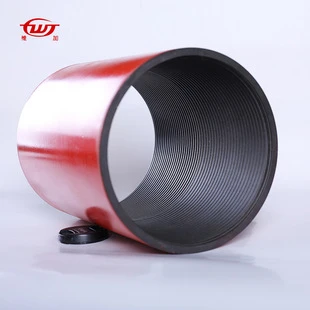- Afrikaans
- Albanian
- Amharic
- Arabic
- Armenian
- Azerbaijani
- Basque
- Belarusian
- Bengali
- Bosnian
- Bulgarian
- Catalan
- Cebuano
- Corsican
- Croatian
- Czech
- Danish
- Dutch
- English
- Esperanto
- Estonian
- Finnish
- French
- Frisian
- Galician
- Georgian
- German
- Greek
- Gujarati
- Haitian Creole
- hausa
- hawaiian
- Hebrew
- Hindi
- Miao
- Hungarian
- Icelandic
- igbo
- Indonesian
- irish
- Italian
- Japanese
- Javanese
- Kannada
- kazakh
- Khmer
- Rwandese
- Korean
- Kurdish
- Kyrgyz
- Lao
- Latin
- Latvian
- Lithuanian
- Luxembourgish
- Macedonian
- Malgashi
- Malay
- Malayalam
- Maltese
- Maori
- Marathi
- Mongolian
- Myanmar
- Nepali
- Norwegian
- Norwegian
- Occitan
- Pashto
- Persian
- Polish
- Portuguese
- Punjabi
- Romanian
- Russian
- Samoan
- Scottish Gaelic
- Serbian
- Sesotho
- Shona
- Sindhi
- Sinhala
- Slovak
- Slovenian
- Somali
- Spanish
- Sundanese
- Swahili
- Swedish
- Tagalog
- Tajik
- Tamil
- Tatar
- Telugu
- Thai
- Turkish
- Turkmen
- Ukrainian
- Urdu
- Uighur
- Uzbek
- Vietnamese
- Welsh
- Bantu
- Yiddish
- Yoruba
- Zulu
casing collar
Understanding Casing Collars Essential Components in Oil and Gas Drilling
The oil and gas industry has continually evolved to enhance the efficiency and safety of drilling operations. Among the plethora of components that contribute to successful drilling are casing collars. These seemingly simple devices play a critical role in well construction and integrity, yet often go unnoticed by those outside the industry. This article explores the importance, design, installation, and challenges surrounding casing collars.
What are Casing Collars?
Casing collars are specific fittings used in oil and gas drilling to connect sections of casing. Casing itself is a series of pipe sections that are inserted into the drilled hole to provide stability, prevent collapse, and isolate water and other fluid sources during production. Casing collars are strategically placed at regular intervals along the length of the casing string, ensuring secure connections and enhancing the overall structural integrity of the well.
Importance of Casing Collars
The primary purpose of casing collars is to maintain the alignment and support of the casing. They provide a robust mechanism to connect different lengths of casing while accommodating the thermal expansion that occurs during drilling. By ensuring tight connections, casing collars play a crucial role in preventing leaks and ensuring that the well remains isolated from surrounding formations. This isolation is paramount in preventing contamination of groundwater and mitigating environmental concerns associated with drilling activities.
Additionally, casing collars enable the efficient circulation of drilling fluids. They facilitate the flow of mud and other fluids that are essential in carrying cuttings to the surface and cooling the drill bit. Effective fluid circulation not only improves the efficiency of drilling but also contributes to the safety of the operation by keeping the borehole stable.
Design and Materials
casing collar

Casing collars come in various designs and materials to meet the unique demands of different drilling environments. Typically, they are made from high-strength steel, which can withstand the harsh conditions of deep drilling. Modern collars may incorporate features such as threaded ends to allow for secure, pressure-resistant connections.
Moreover, design variations such as integral collars and slip-on collars exist. Integral collars are machined from the casing itself, providing a seamless connection that enhances strength. Slip-on collars, on the other hand, are added externally and can be installed or removed as needed. This flexibility allows drilling operations to adapt to various geological conditions and operational requirements.
Installation Challenges
While the installation of casing collars is generally straightforward, it can present challenges, particularly in complex drilling environments. Issues such as misalignment during installation can lead to compromised well integrity, while unexpected geological formations can increase the difficulty of achieving a secure connection.
Moreover, as drilling technology advances and drill lengths increase, there is a heightened demand for more durable and reliable casing collars. Engineers and manufacturers are continually innovating to address these challenges, looking to create collars that can endure extreme pressures and temperatures while providing the necessary support.
Conclusion
Casing collars are a vital yet often overlooked component of the oil and gas drilling process. Their role in ensuring the structural integrity of the well, facilitating fluid circulation, and preventing contamination is indispensable. As drilling operations become increasingly complex, the demand for innovative, robust, and reliable casing collars will continue to grow. Understanding their function and importance allows industry stakeholders to prioritize safety and efficiency in their drilling practices, ultimately contributing to the sustainable development of oil and gas resources. As technology continues to advance, it is crucial that the industry remains adaptable and forward-thinking in its approach to well construction and maintenance.
-
Tubing Pup Joints: Essential Components for Oil and Gas OperationsNewsJul.10,2025
-
Pup Joints: Essential Components for Reliable Drilling OperationsNewsJul.10,2025
-
Pipe Couplings: Connecting Your World EfficientlyNewsJul.10,2025
-
Mastering Oilfield Operations with Quality Tubing and CasingNewsJul.10,2025
-
High-Quality Casing Couplings for Every NeedNewsJul.10,2025
-
Boost Your Drilling Efficiency with Premium Crossover Tools & Seating NipplesNewsJul.10,2025







